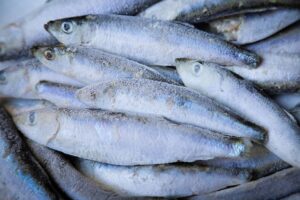For chefs, sourcing the best wild caught frozen seafood is essential. A high-quality product can make or break a restaurant’s reputation. It is also crucial for a healthy menu.
While fresh is always preferred, flash freezing is a great way to maintain straight-from-the-sea flavour all year round. And it can save time and money, too.
How to Choose a Supplier
When choosing a seafood supplier, look for one with detailed information about where the fish was caught and when. This information is important to ensure that the food you serve your customers is fresh and healthy. Choosing a supplier that uses sustainable seafood fishing practices is also important.
 Many seafood suppliers have websites that show exactly where the fish was caught and how it was caught. These sites usually offer a wide variety of fish types and cuts and tips on how to cook them. Some even provide lab results for their products to ensure the fish is safe to eat.
Many seafood suppliers have websites that show exactly where the fish was caught and how it was caught. These sites usually offer a wide variety of fish types and cuts and tips on how to cook them. Some even provide lab results for their products to ensure the fish is safe to eat.
Another option is to shop at a local or farmers’ market for sustainable seafood. However, this can be difficult for some people. It is also a good idea to check out online retailers that offer wild caught frozen seafood. These companies are often less expensive and can deliver fresh seafood to your door in just a few days.
Some websites allow you to customize your orders and deliver them to your home weekly or monthly. The company Ocean Box, for example, provides its customers with various fish types and cuts that they may not be able to get at their local grocery store or farmer’s market. They also simplify the process by shipping directly to your door in three days.
Choosing a Supplier
Several options are available if you are looking for a supplier of wild caught frozen seafood that has been sustainably caught. For example, a company offers a monthly seafood delivery service that delivers wild salmon, scallops and other shellfish to your door. All of their fish are wild-caught and harvested from the Pacific Northwest. The company is committed to sustainability and uses biodegradable packaging.
Choosing a Seafood Market
Seafood is a delicious, nutritious and easy-to-prepare protein that’s low in fat. It also provides valuable vitamins, minerals, and omega-3 fatty acids for your heart. Choosing the right seafood is important, as the quality of the fish or shellfish you start with will determine how well your dish turns out. Whether shopping at a stand-alone fish market or the seafood department of a grocery store, here are some tips to help you get the best seafood for your money.
Look for a market that has a fresh selection of seafood. Fresh fish should have moist flesh and a clean aroma. Live lobsters and crabs should be thrashing around actively, and their tank water should be clean. Shellfish like clams and mussels should have tightly closed shells, and their meat should be firm.
Choosing a Restaurant
When seafood lovers see fillets of fish displayed on ice in a market or restaurant, they assume that the fish were freshly caught. However, this is rarely the case, especially if the seafood travels far from the place of capture to get to the store or restaurant. The reason for this is that once seafood has been harvested, it begins to decompose, which can ruin the flavour and texture of the fish. Fortunately, freezing seafood after harvest is a process that halts this natural deterioration for a very long time.
As a result, many fishermen and seafood processors freeze their catch and ship it to stores nationwide. You can recognize these fish because they are marked with sustainable seafood certifications such as Best Aquaculture Practices or Marine Stewardship Council. Frozen seafood also lowers carbon emissions from air transport and storage and waste associated with storing fresh fish for extended periods.
It is important to look for Country of Origin Labeling (COOL) on wild caught frozen seafood products to ensure you’re eating locally sourced seafood. This information will tell you where the fish was packaged and where it was caught or raised. Seafood from overseas is not regulated as closely and may contain higher levels of antibiotics. This can affect the health and safety of the seafood and its consumers.